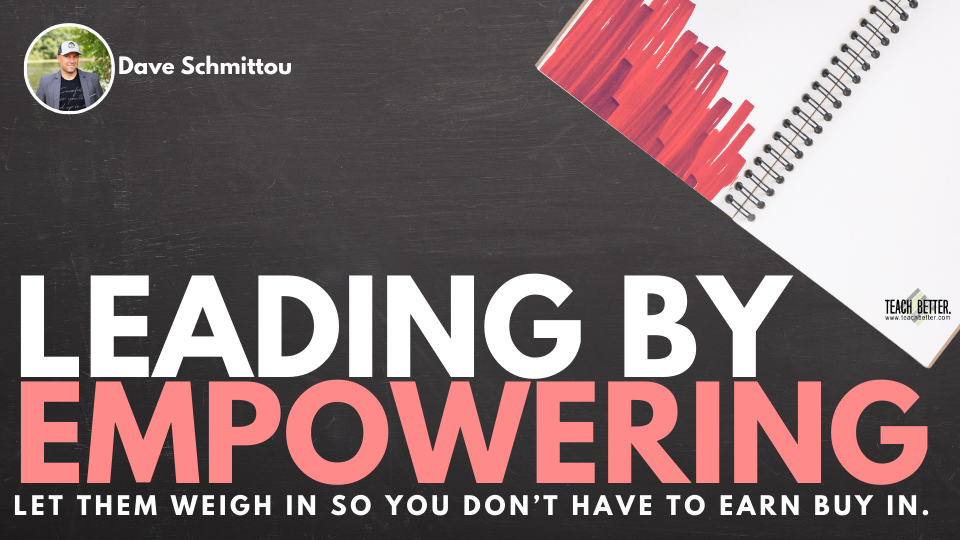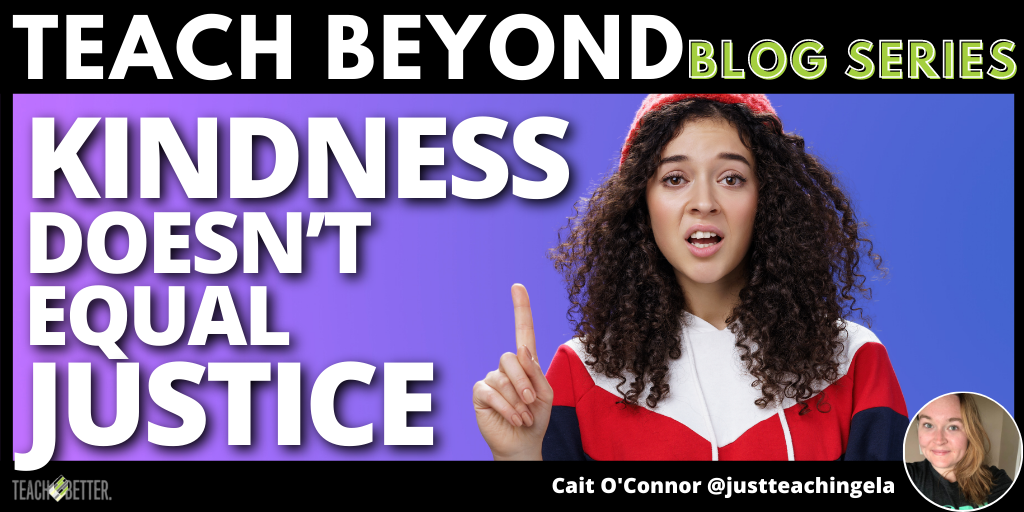TL;DR:
- Being kind is key to creating a better world, but it isn’t the same thing as justice.
- Kindness that is rooted in justice isn’t always comfortable, but it’s necessary to create change that matters and affects marginalized students and communities.
Kindness is a human way that we connect to each other, in both words and actions. Being kind to others is one of the first things we learn as school-aged children, often explicitly through lessons like the “Golden Rule” and through storybooks. I once worked in a middle school that even had a random acts of kindness club.
Kindness especially matters now, when the world at-large has gotten an idea of what it’s like to be forced to make do, to re-adjust and re-align in order to make school work as best as we know how. The pandemic has revealed the importance of kindness in our daily lives more than ever.
Being kind, getting along, showing up, making others feel seen and heard and included—these things are all a part of the power and connection that make up the human experience. But kindness, as we’ve also seen glaringly in this past year or so, is often not enough.
Kindness does not amount to justice.
Policy, action, empathy, disruption of norms, and visibility will take us beyond kindness. Click To TweetLessons from To Kill a Mockingbird
Contrary to the lessons that Harper Lee’s To Kill A Mockingbird taught us, it is not merely enough to “climb inside [one another’s] skin and walk around in it.”
Kindness makes us feel purposeful. It gives us the ‘warm fuzzies.’ It connects us to others by our deeds and words. Mockingbird made many people feel good because it was told through the eyes of a small child, who learned about racism and prejudice by watching it happen to Tom Robinson and even by leveraging some of it herself, against her neighbors, Boo Radley and Mrs. Dubose.
The novel’s conclusion ends with Scout’s life getting to, more or less, go back to the status quo. The events of the Tom Robinson trial change her, as we see through flashbacks and memory in the book. But still, she has the privilege of watching her brother grow up and her father get older. At the end of the day, it’s Tom Robinson’s wife and children who are left without their husband and father, murdered by the state and by extension, hatred. No amount of kindness will ever equal justice for the Robinson family.
Beyond Kindness
In our own lives, this same pattern is hardly a work of fiction. We can exit that person’s skin, or their shoes, or their experiences, and go about our daily lives just the same. Empathy is necessary to provoke the change needed to bring about justice; however, it’s more about what we do to change the conditions of those who are marginalized that leads to actual change and a more just future. Anything less is, well, ineffectual. It’s saviorism.
Making the Connection
When I read To Kill A Mockingbird as an adult, I read it with the interpretation that it’s actually a lot more about kindness than it is about justice. Most of us know that in the end, there is no justice for Tom Robinson. We feel Jem’s heartbreak and disillusionment, but none of that anger ends the violent terror faced by Black people in the Jim Crow South. We grieve with them as they watch the cruel reality of justice not being served.
Instead, Tom Robinson serves as a vehicle for enlightenment and learning for Scout and Jem. He is the subject of objectification rather than kindness. In this way, kindness is actually not helpful or purposeful, but violent. It uses a person’s dignity, agency, and inherent human worth as a lesson for others, rather than an example of true altruism and community.
It’s the same in real life. Sometimes, our best intentions are not enough. Sometimes, our kindness ends up doing more harm, not just individually but structurally.
Being kind has, in some cases, become synonymous with not making it about race/social justice. Kindness has been reduced to being polite or not engaging with discomfort, even if that discomfort is experienced by the students and community members we care about. If we don’t name and label the issues and inequalities that are happening, our culture and the educational system have no hope of ending the injustices that happen in our schools, in our communities, and across our nation.
Being kind is a beginning, not an end. It is a step in the process; it is not the final product. Kindness is integral to understanding and unpacking things like disability, ableism, racism, and racial prejudice, but it does not inherently solve or stop ableism, racism, homophobia, transphobia, anti-fatness, or xenophobia. Policy, action, empathy, disruption of norms, and visibility will take us beyond kindness.
Ask More Questions
As one of my favorite scholars, Audre Lorde said: “It is not our differences that divide us, it is our inability to accept and celebrate those differences.” Colorblindness, awareness, and hyperfocus on our similarity erases the beauty of what makes everyone unique. It is not kind to make someone feel unseen, and it is possible to make them feel seen for what makes them different while also including them.
[scroll down to keep reading]
Disability, color, language, family structure, and other identities are all a fact of our human existence. Kindness cannot afford to become the same toxic positivity that immobilizes us. Being kind, in retrospect, is easy. But it is not enough to do what is easy; as an adult and an educator, it is also my responsibility to do what is right. The lives of Black, Brown, Indigenous, disabled, undocumented, and LGBTQIA+ students depend on teachers who do not stop at kindness. It is educators’ responsibility to continue the conversation with questions like “What haven’t we done well?” and “How can we do better?”
Impact Over Intention
Acts of kindness should do more than be a few seconds of feel good that we get throughout our day. Kindness, in its truest form, isn’t even really about the person who’s being kind. Selfless kindness considers and centers the recipient. How will this change alter their lives? How do I know that this is what they need? Is my perception of what they need rooted in their truth, or mine?
In a digital age, so many people are doing acts of kindness for clout on social media; making it more about likes than about making a difference. Kindness rooted in justice understands that sometimes, calling someone on their harmful behavior is an act of love. It is the act of accountability, a shift in the human social condition, not just the five minutes of reward-center rush you get from doing something nice. Kindness rooted in justice centers impact over the intention.
About Cait O’Connor
Cait O’Connor is a fourth-year public school English/ESOL educator in New York, committed to social justice and equity in education and beyond.


